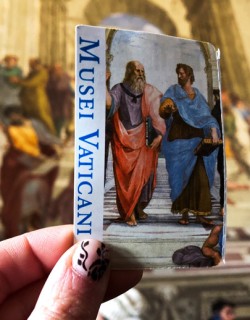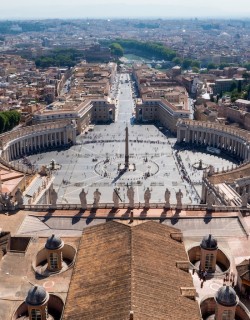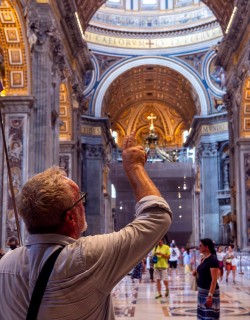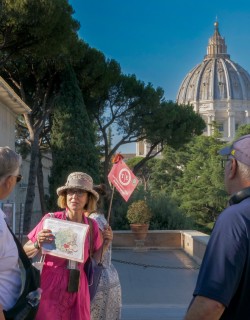Story of the courtyard
Originally known as the “Statues' Courtyard”, it actually already existed prior to the institution of the Vatican Museums and it housed the first nucleus constituting the papal collections of Classical Antiquity. Here, Pope Julius II gathered a beautiful collection of ancient sculptures and his successors, Pope Clement XIV and Pius VI, continued the tradition of acquiring further masterpieces. Its unique octagonal form is thanks to Michelangelo Simonetti who transformed it in the 1700's. A truly exquisite space, it alters drastically depending on the time of day owing to the direction of rich Mediterranean sunlight entering its arches and porticos. [Learn more about our Vatican Museums Night Tour ]
The masterpieces on view
The courtyard is bursting with intricately detailed sarcophagi, friezes and columns and it contains a number of Ancient and Neoclassical masterpieces that are a testament to the love and admiration for the art of sculpture. Aside from the most famous works like the Laocoön, the Belvedere Apollo, the Hermes and the Statue of River God, the courtyard also houses notable sculptures by the acclaimed artist Antonio Canova, known as “the supreme minister of beauty”, as Perseus, Creugas and Damoxenos.
Here are some of the highlights in this remarkable collection:
The Belvedere Hermes
Brought to the courtyard to decorate a niche by Pope Paul II, this beautiful piece was found around 1540 in the gardens surrounding the Mausoleum of Hadrian. It is presumed to be a statue of Antinous, a favorite of Emperor Hadrian. In Greek mythology, Hermes guides the souls of the dead to the underworld and in this eternal depiction, his sombre face is lowered and his traveling cloak is draped majestically over his shoulder and wrapped around his forearm. It was inspired by bronze statues of the school of Praxiteles and is a marvel in terms of detail and skill.
The Statue of River God (Arno)
This impressive character is Arno, the river god. In the traditional reclining pose, this breath-taking sculpture is a replica of a Greek prototype greatly admired by Hadrian. In the early 16th century it was part of a fountain and the basin of the sarcophagus dates from 170-180AD. It is adorned with battle scenes between the Greeks and Amazons and depicts the meddling of the gods in the affairs of men. The statue has undergone numerous restorations by Renaissance artists who replaced many parts, including the head with its expressive bearded face. A small lions head was carved onto the vase, also a restoration and probably made in homage to Pope Leo
Perseus with the head of Medusa
A truly mesmerizing piece, this Neoclassical statue shows the triumphant Perseus holding the severed head of the Medusa, one of the three Gorgons. The Belvedere Apollo, one of the most famous statues in the Octagonal Courtyard, served as Antonio Canova's inspiration when he created Perseus. The statue was even placed on the Apollo pedestal after it was taken to Paris by Napoleon in 1796 and it was so popular that even when Apollo was restored, Perseus remained as a companion piece. Canova's meticulous handiwork is a marvel to behold, particularly when examining the intricacy of the hero's curls and the intertwined snakes of Medusa's hair. The statue was created in just a few months at the end of 1800 and has changed hands numerous times. It was first commissioned by the tribune, Onorato Duveyriez and was then given to the Cisalpine Republic for the new Bonaparte Forum in Milan. Pope Pius VII Chiaramonti later purchased the statue and gave it its home in the Octagonal Courtyard.
Creugas and Damoxenos
Another example of Canova's immense talent, the realization of these two immortalized athletes was inspired by a story titled the Periegesis of Greece written by Greek traveler Pausanias. According to legend, the fighters, Creugas of Durres and Damoxenos of Syracuse were so evenly matched that their epic battle lasted hours without resolution. The decision was made for both to take a final, undefended blow. Creugas was posthumously declared the winner after Damoxenos was disqualified for killing his opponent by striking his side and tearing out his intestines.
The figures were restored recently and replaced in the courtyard in 2015.
All the Vatican Tours of Through Eternity Tours offer an in-depth experience of the Belvedere Courtyards and its wonders of art.




